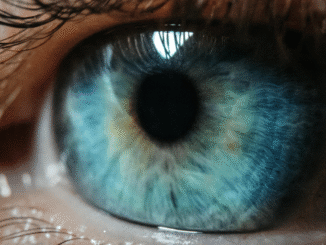
By MATTHEW K. ADAMS, MD, MBA
As a retina specialist, I have seen firsthand how systemic conditions like high blood pressure can lead to serious, sometimes irreversible vision problems. Two of the most common eye conditions related to uncontrolled blood pressure are hypertensive retinopathy and retinal vein occlusions. These conditions can sneak up silently, often without symptoms at first—but they can strike suddenly and destroy sight if not caught and managed in time. In this article, I will discuss how these conditions develop, why high blood pressure plays such an important role, and what you can do to protect both your eyes and your overall health.
What is Hypertensive Retinopathy?
Hypertensive retinopathy is a condition where high blood pressure damages the small blood vessels in your eye. Over time, this damage can reduce the flow of oxygen and nutrients to the retina, resulting in the following findings on your eye exam:
- Narrowing of retinal arteries
- Flame hemorrhages (bleeding)
- Cotton wool spots (small areas that swell due to lack of blood flow)
- Swelling of the optic nerve (in severe cases)
These changes might not affect your vision right away, but they’re a warning sign that your blood pressure is high enough to harm the delicate tissues in your eyes—and likely, other organs in your body like your brain, heart, and kidneys.
Treatment of hypertensive retinopathy usually involves simply controlling the blood pressure. Flame hemorrhages, cotton wool spots, and swelling of the optic nerve can all be reversed with better control of hypertension.
What is a Retinal Vein Occlusion?
A retinal vein occlusion occurs when one of the veins that drains blood from your retina becomes blocked. This leads to a backup of blood and fluid, causing swelling, bleeding, and in many cases, loss of vision.
High blood pressure increases the risk of retinal vein occlusions because it damages the blood vessel walls and contributes to blockages. The higher and more uncontrolled your blood pressure is, the greater your risk.
Treatment of retinal vein occlusions often requires injections in your eye and sometimes laser treatment as well. Vein occlusions are known to progress rapidly, so time-to-treatment is of paramount importance to preserving your vision.
Controlling Your Blood Pressure: The First Line of Defense
The good news is that you can reduce your risk of hypertensive retinopathy and retinal vein occlusions by managing your blood pressure. Here are some practical steps:
- Monitor your blood pressure regularly. Know your numbers and aim for your target range, usually around 120/80 mmHg unless otherwise advised by your doctor.
- Take medications as prescribed. Don’t skip doses or stop medications without discussing it with your healthcare provider first.
- Limit salt intake. Sodium can raise blood pressure—try to stay under 1,500–2,000mg per day.
- Stay physically active. Aim for at least 30 minutes of moderate exercise 3–5 days of the week.
- Eat a heart-healthy diet. Plenty of vegetables, whole grains, lean proteins (lean meat and fish), and avoiding trans and unsaturated fats.
- Maintain a healthy weight. Losing even 5–10 pounds can make a significant difference.
- Avoid tobacco and limit alcohol. Both can raise blood pressure and damage blood vessels.
When to See a Retina Specialist
If you have high blood pressure—especially if it’s been uncontrolled for some time—it is crucial to get regular eye exams, including a dilated fundus exam, by a retina specialist. You should also see a retina specialist if:
- Monitor readings of your retinal blood vessels more closely
- You’ve had vision changes like blurriness, floaters, or dark areas
- Your primary eye doctor sees signs of retinal damage
- You’ve had a previous vein occlusion or retinal bleeding
Remember: vision loss from these conditions can be sudden and permanent—early detection and treatment make all the difference.
Final Thoughts
High blood pressure doesn’t just affect your heart—it can silently damage your vision too. By controlling your blood pressure and staying on top of your eye health, you can significantly reduce your risk of serious, vision-threatening conditions.
If you haven’t had a recent dilated eye exam—add it to the list. Make your appointment. Review your medications. And take the steps today that your future self will thank you for.
Learn more at www.texasmr.com.



